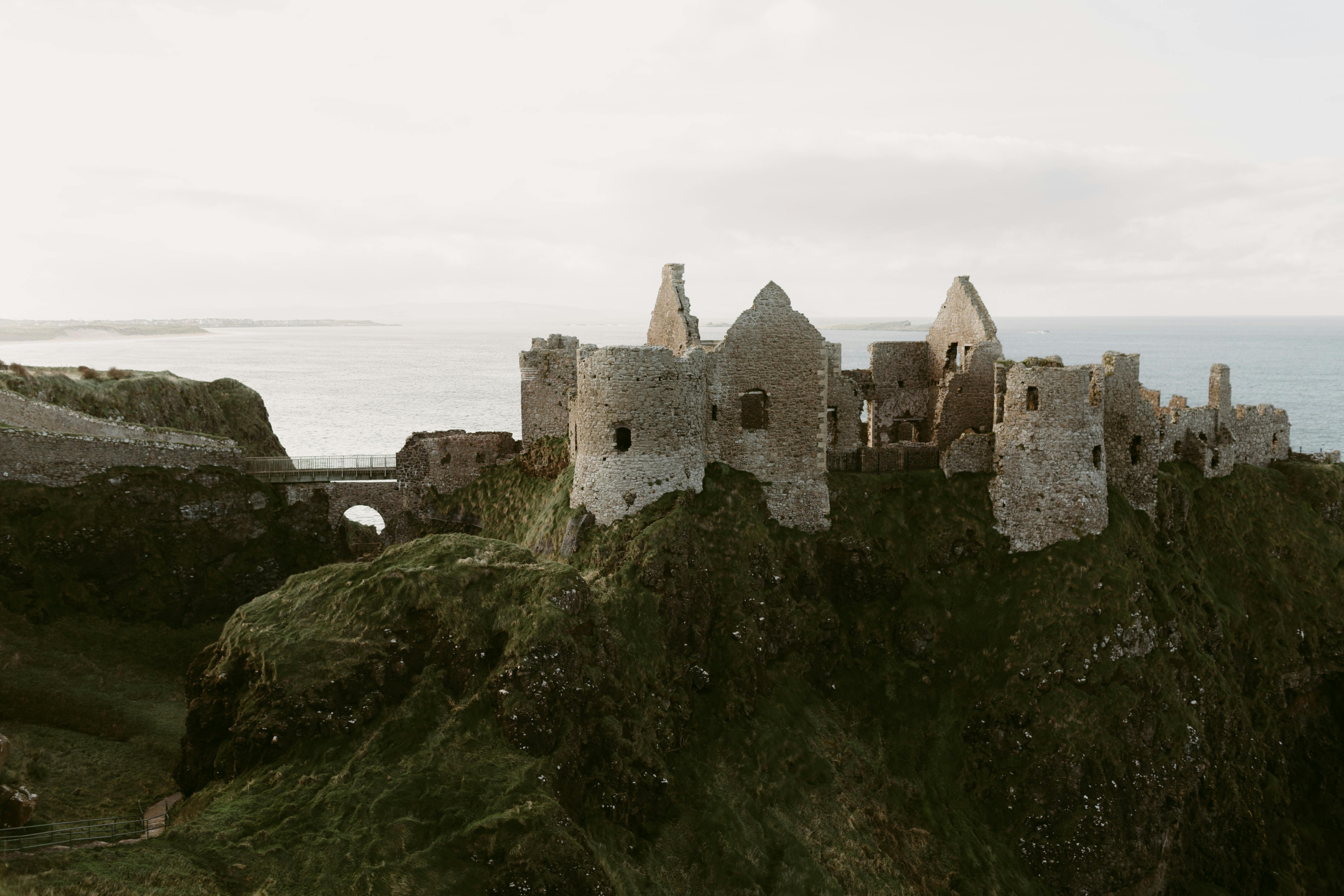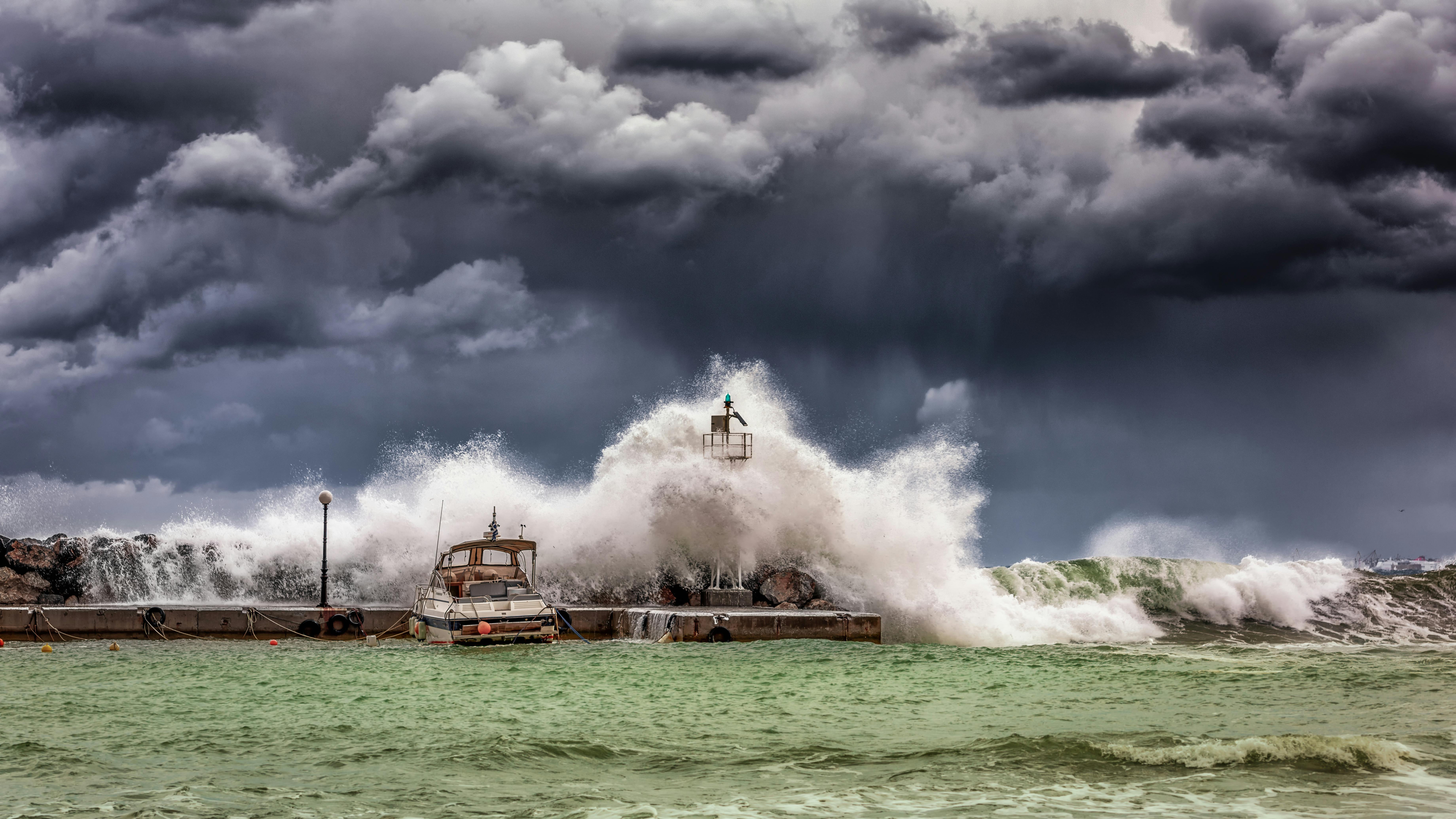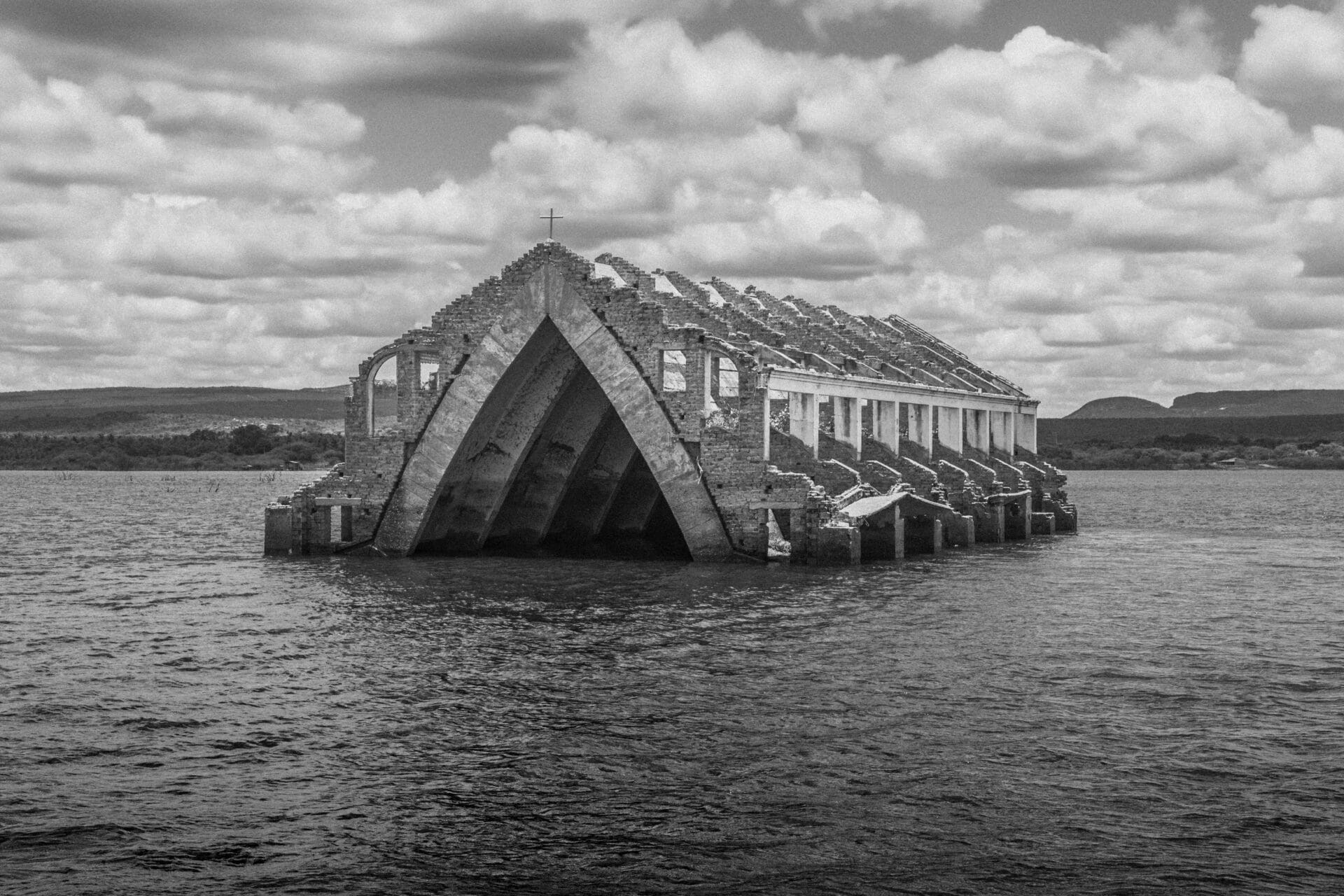Flooding can be a devastating event for homeowners, as it can cause extensive damage to homes and possessions. One of the items that can be affected by flooding is a water heater. If a water heater is flooded, it can suffer significant damage that may render it unusable. In this article, we will discuss how flooding can affect water heaters and what steps should be taken if your water heater has been flooded.A flood can have a devastating effect on a water heater. Floodwaters can damage the electrical components of the water heater, leading to short-circuiting and corrosion. Floodwater can also cause leaks and rusting in the tank, leading to the need for replacement. In addition, standing floodwater can affect the system’s efficiency and potentially lead to further damage from mold and bacteria growth.
What Damage Can A Flood Cause To A Water Heater?
A flood can cause significant damage to a water heater. Depending on the severity of the flooding, it can lead to short-circuiting, corrosion of internal components and the build-up of sediment and other debris. This can result in a damaged water heater that is not only unsafe, but also inefficient and unable to provide hot water for your home.
In addition to short-circuiting and corrosion, flooding can also cause permanent damage to the water heater’s components. If the flooding is severe enough, it could cause the tank to crack or rupture, which can lead to a major water leak in your home. Additionally, if sediment or other debris is left behind after the floodwaters have receded, it can clog up the system and make it more difficult for your water heater to function correctly.
Finally, flooding can also lead to a buildup of bacteria in your hot water system. This bacteria can cause foul odors as well as an increase in health risks if you use that contaminated water for bathing or drinking. It’s important to inspect any affected areas thoroughly following a flood and take necessary steps to ensure that your hot water system is safe and functioning properly.
Are Water Heaters Vulnerable To Floods?
Water heaters can be vulnerable to flooding, particularly in areas prone to extreme weather conditions such as hurricanes and heavy rains. If a water heater is located in an area where flooding is likely, it’s important to take the necessary precautions to protect it. Water heaters can be damaged if they come into contact with floodwaters, which can lead to costly repairs or even total replacement.
The most effective way to protect a water heater from floods is by elevating it above the expected flood level. The higher the elevation, the better the protection. In addition, many local building codes require water heaters be installed at least 12 inches above the highest expected flood level in order to satisfy building codes. If possible, water heaters should also be placed on elevated platforms or stands.
It’s also important that your water heater is properly sealed and insulated to prevent moisture from entering and damaging it. This includes making sure all pipes and connections are sealed tightly with plumber’s tape or other sealants to prevent any leakage. A waterproofing membrane should also be applied around the outside of the water heater for additional protection against flooding.
Finally, you should always install a shut-off valve near your water heater so you can quickly turn off the water supply in case of a flood emergency. This will help minimize damage by preventing further flooding from entering your home through your plumbing system.
Overall, taking these preventive measures can help protect your water heater from floods and reduce potential damage or losses due to flooding-related incidents.
Protecting a Water Heater from Flood Damage
Water heaters are essential to any home, and ensuring that it is protected from flood damage is critical. Fortunately, there are several steps homeowners can take to protect their water heaters from flood damage.
The first step is to make sure that the water heater is elevated off the ground. This can be done by raising the unit with a platform or a base made of plywood and metal frames. Doing so will help prevent water from reaching the water heater in case of flooding. It’s also important to make sure that there are no gaps between the bottom of the tank and the platform or base, as these could allow water to seep in.
It’s also important to install a flood valve on the incoming cold-water line connected to the water heater. This valve will help control any backflow of water into the incoming line, preventing flooding inside your home. Additionally, it’s important to check all pipes connected to your water heater regularly for any signs of leakage or corrosion which could lead to flooding.
Finally, it’s a good idea to keep an eye on local weather forecasts so you can be prepared in case of flooding in your area. Consider having sandbags on hand as well, so you can barricade around your home if necessary. Taking these precautions can help protect your home and its contents from flood damage, including your valuable water heater.
Assessing Damage
The first step to take after a water heater is damaged by a flood is to assess the extent of the damage. It’s important to determine if the unit can be repaired or if it needs to be replaced. If it can be repaired, it’s important to identify what repairs are needed and what parts need to be replaced. If the unit needs to be replaced, it’s important to choose a new water heater that is appropriate for your home and fits within your budget.
Removing Water and Debris
After assessing the damage, the next step is to remove any standing water and debris from around the water heater. This may involve using a wet-dry vac or other water extraction equipment. It’s also important to check for any electrical hazards that may have been caused by the flooding. If there are any exposed wires or other potential safety hazards, they should be addressed before proceeding further.
Disconnecting and Draining
Once all of the standing water has been removed, it’s time to disconnect and drain the water heater. This involves turning off power to the unit, disconnecting any pipes or hoses connected to it, and draining all of the remaining water from inside the tank. Once this has been done, it’s important to thoroughly clean inside of the tank in order to prevent mold growth.
Repair or Replacement
At this point, you can decide whether you want to repair or replace your damaged water heater. If you decide on repair, then you will need to purchase any needed parts and carefully follow instructions in order make sure everything is installed correctly. If you decide on replacement, then you will need to select an appropriate new unit for your home and arrange for installation.
Testing and Maintenance
Once repairs or replacements have been made, it’s important to test out your new or repaired water heater before using it again. This includes flushing out any sediment that may have built up during flooding as well as testing all safety features such as thermostats and pressure relief valves. Once testing is complete, regular maintenance should be performed in order keep your water heater running smoothly and safely.

Do Insurance Policies Cover Damage Caused By Floods To Water Heaters?
Most homeowner’s insurance policies will cover damage to a water heater caused by floods. However, the coverage will depend on the specific policy and the type of flood damage that has occurred. Some policies may only cover certain types of flooding, such as ground water seepage, while others may cover a wider range of flood damage. It is important to check your policy carefully to determine what is and isn’t covered.
In addition, some policies may require additional riders or endorsements in order to be eligible for coverage of flood damage to a water heater. These riders or endorsements typically provide additional coverage for certain types of disasters or hazards that are not covered by the standard policy. Again, it is important to read your policy carefully and understand what it does and does not cover in order to ensure that you are adequately protected against any potential losses due to flooding.
It is also important to note that even if your policy does provide coverage for flood damage, there may be restrictions or limitations on the amount of coverage you have. For instance, some policies may only provide coverage up to a certain dollar amount or percentage of the value of the water heater. Additionally, there may be deductibles or other out-of-pocket expenses that you will need to pay before your insurance company pays out any benefits.
In summary, most homeowner’s insurance policies will provide some level of coverage for damages caused by floods to water heaters. However, it is important to check your policy carefully in order to understand what type of flooding is covered and any restrictions or limitations on the amount of coverage provided. Additionally, riders or endorsements may need to be added in order to obtain full protection from losses due to flooding.
Is it Worth Replacing a Damaged Water Heater After a Flood?
A flooded home can be a devastating and expensive experience. Water damage can be extensive, and it’s important to take the necessary steps to protect yourself and your belongings. One of the items that may need replacing after a flood is your water heater. In some cases, it may be worth it to replace the damaged water heater, while in other cases, it may be more cost-effective to simply purchase a new one.
One of the main factors to consider when deciding whether or not to replace your water heater after a flood is how much damage was done to the unit itself. If only minor damage was done, such as some rust or corrosion, then replacing the unit might be a better option than purchasing a new one. However, if extensive damage was done, such as major rusting or corrosion, then replacing it might not be worth the time and money.
Another factor that should be considered is how old the water heater is. If your water heater is more than 10 years old, then replacing it with a new one might be more cost-effective in the long run. This is because newer models are more energy efficient and can save you money on your energy bills in the long run.
It’s also important to consider any other potential problems that could arise from having an old water heater after a flood. These could include sediment buildup in hard-to-reach places or even dangerous mold growth due to moisture buildup in hidden areas of your home that weren’t properly dried out after the flood occurred.
Overall, deciding whether or not to replace your damaged water heater after a flood will depend on several factors including how much damage was done and how old your unit is. If you’re unsure about what will work best for you, consulting with an experienced plumber or HVAC technician can help you make an informed decision about what will work best for you and your home.
Benefits of Installing a Flood-Proof Water Heater
Installing a flood-proof water heater is an excellent way to protect your home from the effects of flooding. A flood-proof water heater is designed to resist flooding conditions and provide reliable hot water when you need it most. Here are some of the benefits of installing a flood-proof water heater:
Protection from Flooding: The most obvious benefit of installing a flood-proof water heater is that it provides extra protection from flooding conditions. A flood-proof water heater is designed to resist rising waters, so it will remain functional when other fixtures and appliances in your home may not.
Lower Energy Bills: A flood-proof water heater can also help lower your energy bills. Because these heaters are designed to resist flooding, they are often more efficient than standard models. This means that you can save money on energy costs while also protecting your home from the effects of flooding.
Ease of Installation: Installing a flood-proof water heater can be relatively simple and straightforward. Many manufacturers offer installation services or easy step-by-step instructions for do-it-yourselfers. In addition, many of these heaters are designed to fit in existing plumbing systems, making installation even easier.
Overall, installing a flood-proof water heater can be an excellent choice for homeowners who want to protect their property from potential flooding damage while also saving money on energy costs.

Conclusion
In conclusion, a flood can certainly ruin a water heater, depending on the severity of the flooding and how high the floodwaters reach. If the water does not reach the electrical components of the heater, corrosion and rusting can occur if left untreated. It is important to take steps to protect your home from potential flooding, including installing check valves in your plumbing system and keeping your home at a safe elevation. If a flood does occur, it is important to have an experienced technician inspect your water heater for damage. If necessary, they can replace or repair any affected parts so that you can get back to enjoying hot water again.
Ultimately, it is better to be prepared for a potential flood than to have to deal with its consequences. Taking preventative measures now could save you time, money, and stress in the future!

